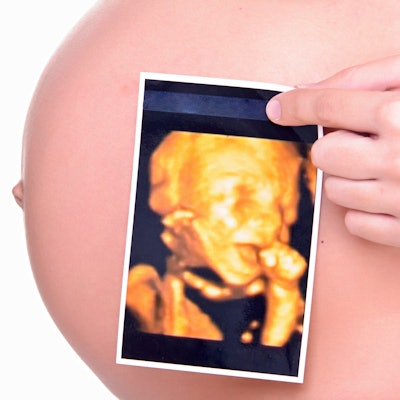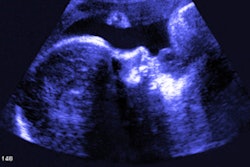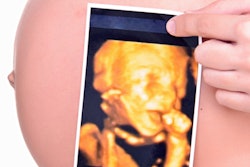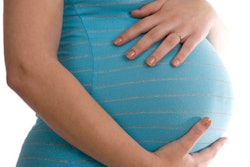
The incidence of autism spectrum disorder (ASD) has dramatically increased in the past few decades -- as has the use of prenatal ultrasound. Is there a link? A new study published online February 12 in JAMA Pediatrics offers equivocal results.
Researchers from Boston Medical Center found no statistically significant link between ultrasound and autism for a number of factors, such as the number of scans, when scans occurred during pregnancy, and the duration of ultrasound exposure. But they did find an association between the development of autism and the depth of ultrasound penetration for scans performed at certain points during pregnancy.
The researchers believe the findings indicate that further study is needed to determine whether there is a link (JAMA Pediatr, February 12, 2018).
"First-trimester use of ultrasonography has become commonplace, with new technology resulting in more detailed images requiring longer exposure and higher-powered energy emission," wrote the group led by Dr. N. Paul Rosman. "Although prenatal ultrasound has generally been regarded as safe, most studies on safety evaluated technology before 1992, when regulations were stricter and machines were less powerful."
A decade of speculation
There has been more than a decade of speculation about a link between ultrasound and autism. Most recently, a 2016 study published in Autism Research claimed to find a link between first-trimester ultrasound and greater severity of autism symptoms. And a 2007 study by Casanova et al proposed that ultrasound could be one of a "triple hit" of external stressors that could trigger autism symptoms in at-risk individuals at a critical time in brain development.
In the new paper, Rosman and colleagues note the paucity of research on a connection between ultrasound and autism. Research has pointed to the potential overuse of prenatal sonography, with some studies showing that prenatal ultrasound screening in low-risk pregnancies offers no improvement in neonatal outcomes, compared with use only when medically necessary, they wrote. In addition, the American Congress of Obstetricians and Gynecologists (ACOG) has said that "ultrasound energy delivered to the fetus cannot be assumed to be completely innocuous."
The question is whether ultrasound affects the development of the nervous system, perhaps by raising the temperature in the brain of a growing fetus -- which can cause tissue damage -- or by affecting the ability of neurons to settle in their correct cortical position.
"Ultrasound on the fetal skull can convert to thermal energy, conducted to the soft tissue of the brain," Rosman and colleagues wrote. "Doppler studies pose the highest risk for thermal effects on the fetus, because the intensity and acoustic power are the highest among all types of ultrasonography and may cause substantial temperature increase in the fetal skull and surrounding brain tissue."
A number of factors
Rosman's group sought to investigate whether factors such as prenatal ultrasound frequency, timing, duration, and strength were associated with a diagnosis of autism spectrum disorder. The study included 107 patients with ASD, 104 controls with developmental delay, and 209 controls with typical development, for a total of 420 participants (328 boys and 92 girls). The children were identified by medical records based on prenatal care and delivery at Boston Medical Center from July 2006 through December 2014; ASD and developmental delay without ASD was diagnosed by a developmental-behavioral pediatrician.
The researchers analyzed the data between May 2015 and November 2017, quantifying ultrasound exposure by the number and timing of scans, duration, mean strength, and time of Doppler and 3D/4D imaging. They adjusted for infant sex, gestational age at birth, and maternal age; the mean age of the children was 6 years as of January 2016.
The ASD group received a mean of 5.9 scans, the developmentally delayed group received a mean of 6.1 scans, and the typical-development group received a mean of 6.3 scans. The mean number of total scans in the study was more than five, "considerably more than the one to two scans recommended by [ACOG] in low-risk pregnancies," the authors noted.
In terms of maternal characteristics, the mothers of children with ASD were more likely to be obese (body mass index of at least 30), compared with the mothers of children with developmental delay. The mothers of children with ASD were also more likely than the mothers of children with typical development to be 35 years or older and to have begun prenatal care later.
Rosman and colleagues' findings on an ultrasound-autism link were equivocal. On the one hand, they found no statistically significant difference in the timing of the initial ultrasound or the total time of ultrasound exposure between the ASD group and the developmental-delay group. In fact, children with ASD had fewer overall ultrasonographic examinations during the first trimester, the period during which the authors hypothesized that the risk would be the greatest.
On the other hand, the ASD group did have a greater mean depth of ultrasonographic penetration than the developmental-delay group in the first trimester, and it had greater depth than the typical-development group during the first and second trimesters.
| Fetal ultrasound exposure and autism over 3 trimesters | |||||
| Characteristic | ASD group (n = 107) | Developmental-delay group (n = 104) | Typical-development group (n = 209) | Statistical significance reached | |
| Total No. of scans | 5.9 | 6.1 | 6.3 | No | |
| Total duration of ultrasound exposure | 52 minutes | 55 minutes | 58 minutes | No | |
| Depth of ultrasonography | 13.4 cm | 13.4 cm | 12.9 cm | Yes | |
| Frame rate of ultrasonography | 40.3 Hz | 40.4 Hz | 41.3 Hz | No | |
| Doppler exposure overall | 2.9 minutes | 3.6 minutes | 3.1 minutes | No | |
| 3D | 1.3 minutes | 1.1 minutes | 1.5 minutes | ||
| 4D | 2.2 minutes | 1.8 minutes | 2.2 minutes | ||
The greater depth of ultrasound among the ASD cohort may be a factor of maternal obesity, because greater depth is required for imaging obese mothers, the researchers noted.
"As ultrasonographic depth increases, wave frequency and strength decrease, but the volume of fetal tissue exposed to ultrasonic energy increases because the wave energy dissipates in a wedge shape," they wrote. "Therefore, use of greater-depth ultrasonography may be more likely to alter [certain cell migration in] the developing brain."
More study needed
Although this research found an association between greater mean depth of ultrasound penetration and diagnosis of ASD, there could be other factors related to the strength of the ultrasound beam, and more research is needed, the group wrote. Additional study is also needed to calculate the amount of energy to which the fetal brain is exposed during prenatal ultrasonography and to evaluate how nervous system cells may be affected by prenatal ultrasound exposure.
"Future studies should more closely document total exposure across all trimesters of pregnancy," the researchers concluded. "More research is needed to evaluate the various types of ultrasound exposure, including Doppler and [3D/4D] imaging."




















